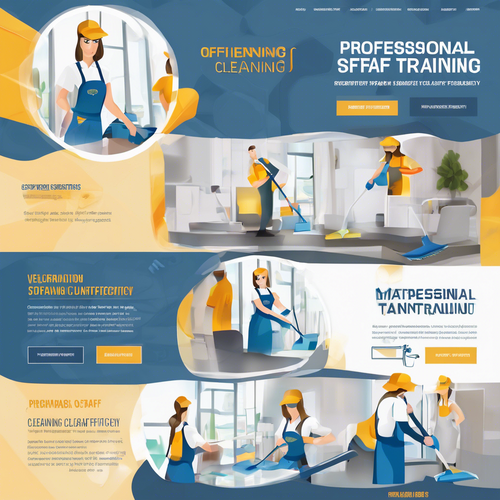Training and Safety for Professional Cleaning Staff
In an age where dust bunnies can gather like political candidates at a town hall meeting, the art of cleaning has transformed into a science requiring rigorous training and adherence to safety protocols. Picture this: on one hand, we have the well-trained professional armed with the knowledge and skills necessary to tackle any mess, while on the other hand, we find the average consumer, armed only with a bottle of all-purpose cleaner and sheer optimism. It’s a classic case of preparation meets the uninformed.
Cleaning is not merely about making surfaces shine; it’s about ensuring safety, as slippery floors can turn a beautifully polished environment into a personal injury lawsuit waiting to happen. The necessity of comprehensive training programs that integrate safety measures is not just a good practice; it should be the cornerstone of any cleaning business.
The Paradox of Cleaning: Safety vs. Efficiency
Herein lies the conundrum: cleaning professionals often face the daunting task of balancing efficiency with safety. Effective training can significantly reduce accidents, yet many cleaning staff members receive little more than a brief overview of their duties—reminiscent of giving a pilot a manual without ever letting them near an aircraft. Isn’t it ironic that companies invest heavily in the latest cleaning technologies but skimp on training the very individuals who wield them?
According to OSHA statistics, slips, trips, and falls account for a staggering 25% of all reported accidents in the workplace. Equipping cleaning staff with the understanding of potential hazards, proper use of equipment, and adherence to safety protocols is not optional; it is imperative.
Building a Robust Training Program
A well-designed training program is like a finely tuned orchestra, where each component harmoniously contributes to the overall success of the ensemble. Here are some critical elements to consider:
- Comprehensive Onboarding: New hires should undergo extensive training covering everything from the proper use of cleaning agents to emergency protocols. Think of it as providing a map before sending someone into uncharted territory. 🗺️
- Hazard Awareness: Staff must be trained to identify hazards in their surroundings, from wet floors to electrical cords, and learn how to mitigate these risks effectively.
- Equipment Handling: Understanding how to operate and maintain cleaning equipment not only enhances efficiency but minimizes accidents. After all, a vacuum cleaner is a tool, not a weapon of mass destruction! 🧹
- Health and Safety Protocols: Training in personal protective equipment (PPE) usage, such as gloves, goggles, and masks, is crucial. They are the unsung heroes of a cleaner’s toolkit.
- Ongoing Education: The cleaning industry evolves as rapidly as technology. Regular training updates keep staff informed about new products, techniques, and safety protocols.
Creating a Culture of Safety
Training is only the tip of the iceberg. Fostering a culture of safety requires continuous reinforcement and open communication. Cleaning companies should encourage staff to report unsafe conditions without fear of retribution—like wolves howling in the night, their warnings should be heard and heeded. Strong leadership plays a pivotal role in shaping safety culture; leaders must walk the talk, demonstrating their commitment to safety at all levels of the organization.
“Training isn’t just a box to check; it’s a lifeline for our staff. It’s the difference between a routine job and a hazardous mission,” remarks Maria Gonzalez, a veteran cleaning supervisor with over a decade of experience in safety management.
An Anecdote from the Field
A friend of mine, who happens to run a small cleaning service, once told me about an incident involving a new recruit. Eager to impress, the rookie decided to tackle a stubborn stain on a porcelain surface with an industrial-strength cleaner. The result? A cloud of noxious fumes that sparked a mini-evacuation of the office building. Lessons were learned that day—most notably, the importance of training and adhering to safety protocols.
The Path Ahead: Investing in Training
Investing in professional training for cleaning staff is not merely an operational expense but a strategic imperative. Imagine the long-term benefits: fewer accidents, reduced turnover rates, and enhanced service quality. Moreover, a well-trained staff is more likely to take pride in their work—after all, who doesn’t want to be known as the “cleaning ninja” of the office?
As we march into a future filled with advanced technologies and products, let’s not forget that the most critical element of successful cleaning services remains the human touch. It’s high time we elevate the status of cleaning professionals from mere custodians to qualified experts whose training and safety are paramount. Because, in the end, when we prioritize training and safety, everyone wins—even dust bunnies. 🌪️
